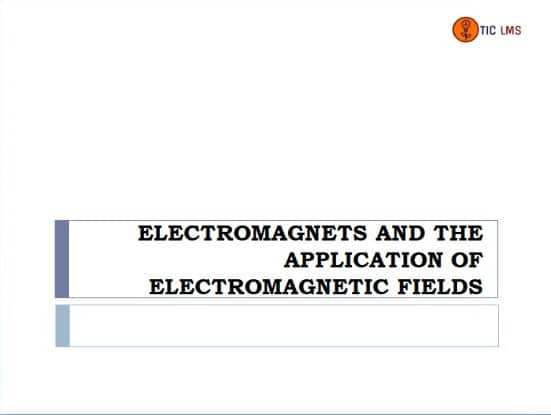Electromagnetic fields linger in the background of atomic interaction, orchestrating the intricate dance of bonding between atoms. These fields, born from electric charges in motion, are pivotal to understanding chemical bonds—akin to invisible strings weaving together a tapestry of molecular structures. This article delves deep into this compelling phenomenon, exploring the duality of electromagnetic forces and their bond-forming prowess in chemistry.
To appreciate the role of electromagnetic fields in chemical bonding, one must first comprehend the fundamental forces that govern atomic interactions. At the heart of these interactions lies the electromagnetic force, one of the four elemental forces of nature. This force operates at both the macroscopic and microscopic levels, manifesting in myriad forms, from the majestic auroras dancing in the polar skies to the intricate affiliations between subatomic particles. In essence, electromagnetic interactions serve as the glue that holds atoms together within molecules and drives countless chemical reactions.
Atoms, the building blocks of matter, exhibit a plethora of charged subatomic particles. The positively charged protons congregate within the nucleus, while negatively charged electrons swirl around in quantized regions of space called orbitals. This simplistic dichotomy of charge sets the stage for the emergence of electromagnetic fields. When electrons occupy their various orbitals, they create distinct electric fields extending into the surrounding space, forming a nuanced landscape of potential interactions. These fields not only influence the behavior of nearby particles but also establish the framework for atomic bonding.
At the microcosmic level, two primary types of chemical bonds are forged through electromagnetic interactions: ionic and covalent bonds. In ionic bonding, atoms exchange electrons, resulting in the formation of charged ions. Consider sodium and chlorine; sodium relinquishes an electron to chlorine, creating a positively charged sodium ion and a negatively charged chloride ion. The electromagnetic attraction between these oppositely charged ions forms a robust ionic bond, much like magnets drawn together by an unseen force. This bond typifies the tangible manifestation of electromagnetic attraction, which culminates in the formation of stable compounds.
Covalent bonding, in contrast, ensues when atoms share electrons rather than transferring them entirely. In this arrangement, electromagnetic fields again play a crucial role. As two atoms approach each other, their respective electron clouds begin to overlap, generating a scenario where electrons can minister to both nuclei. The stability of this bond arises from the balance of attraction and repulsion defined by electromagnetic interactions. Each atom strives to attain a more energetically favorable state by achieving a full valence shell of electrons, a phenomenon often likened to a pair of dancers harmonizing their movements to create an elegant display. This dance of electrons not only solidifies chemical bonds but also engenders the diverse array of molecular structures observed in nature.
Delving further into the intricacies of chemical bonds, one must consider the implications of electronegativity—the tendency of an atom to attract electrons within a covalent bond. The disparity in electronegativity between atoms dictates the polarization of the bond, leading to the emergence of dipoles. In a water molecule, for example, the oxygen atom exhibits a higher electronegativity than hydrogen, resulting in a polar covalent bond. This polarization alters the electromagnetic fields surrounding the molecule, bestowing water with its unique properties, such as its ability to dissolve salts and its anomalous expansion upon freezing. In this case, the electromagnetic nature of the bond extends beyond mere connection; it informs the physicochemical behavior of the substance as a whole.
Electromagnetic fields are not confined to covalent and ionic bonds; they also play a pivotal role in more complex interactions such as hydrogen bonding. Despite being relatively weak compared to covalent and ionic bonds, hydrogen bonds arise from the electromagnetic attraction between a hydrogen atom, covalently bonded to an electronegative atom, and another electronegative atom. This type of bonding is quintessential in biological molecules, most notably in the formation of DNA and the interaction of proteins. The unique ability of hydrogen bonds to create transient yet life-sustaining networks exemplifies how electromagnetic forces shape not only chemical bonds but also the very essence of biological life.
Moreover, the role of electromagnetic fields transcends the physical realm of bonding to influence reactive dynamics in chemical reactions. The transition states of reactions often involve the reorganization of electron clouds and the fluctuation of electromagnetic fields, which can alter reaction pathways. As compounds collide, their electromagnetic fields interact, facilitating or hindering bond formation and breaking. This interactivity epitomizes the delicate balance maintained by electromagnetic forces during chemical processes, where potential energy is invested or released, dictating the spontaneity of reactions. Chemists, therefore, must consider these fields when predicting reaction outcomes, as they can ultimately determine the trajectory of molecular evolution.
In conclusion, the intricate relationship between electromagnetic fields and chemical bonds illustrates a profound interplay of forces shaping our molecular world. From the stability conferred through ionic and covalent bonds to the fleeting yet vital hydrogen bonds, electromagnetic fields are the unseen architects of chemical interactions. As researchers continue to unravel the complexities of these electromagnetic forces, they extend our comprehension of the chemistry that underpins life itself, revealing a reality where scientific inquiry dances gracefully to the rhythm of these invisible forces.












